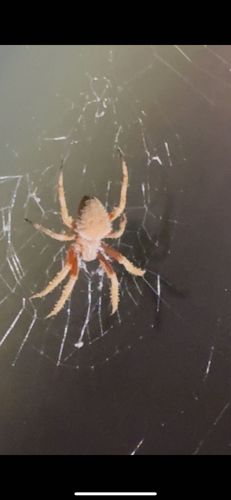Orb Weaver Spider (likely a species of Argiope or a similar genus due to the web type and body shape)
Scientific Name: Araneidae (family level, specific genus/species difficult to determine from image alone)
Order & Family: Order: Araneae, Family: Araneidae
Size: (Female) 5-20 mm body length; (Male) significantly smaller, 2-8 mm.

Natural Habitat
Gardens, fields, forests, often found in human-made structures like eaves and window frames. They build their webs in open areas between plants or structures.
Diet & Feeding
Mainly insects caught in their orb webs, such as flies, moths, mosquitoes, and beetles. They are ambush predators.
Behavior Patterns
Orb weavers are known for constructing intricate, circular (orb) webs daily, often rebuilding them at dawn or dusk. They typically sit in the center of their web or hide nearby, sensing vibrations to detect prey. Many species are nocturnal, while others, like the Garden Orb Weaver, are active during the day. They are solitary.
Risks & Benefits
Potential Risks: Generally harmless to humans. Their bite is not considered medically significant and is comparable to a bee sting, usually only occurring if provoked. Potential Benefits: Highly beneficial as natural pest control, consuming a large number of nuisance and agricultural insect pests. Their webs also help maintain ecological balance.
Identified on: 9/28/2025